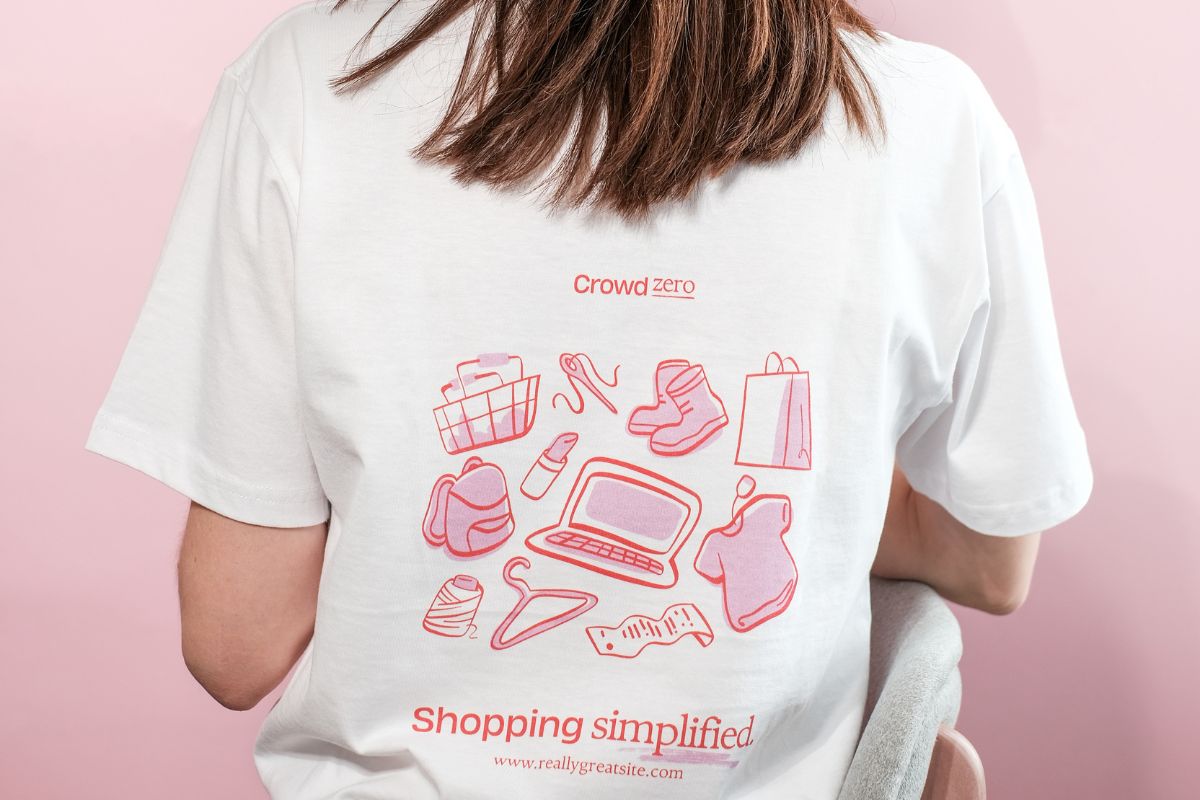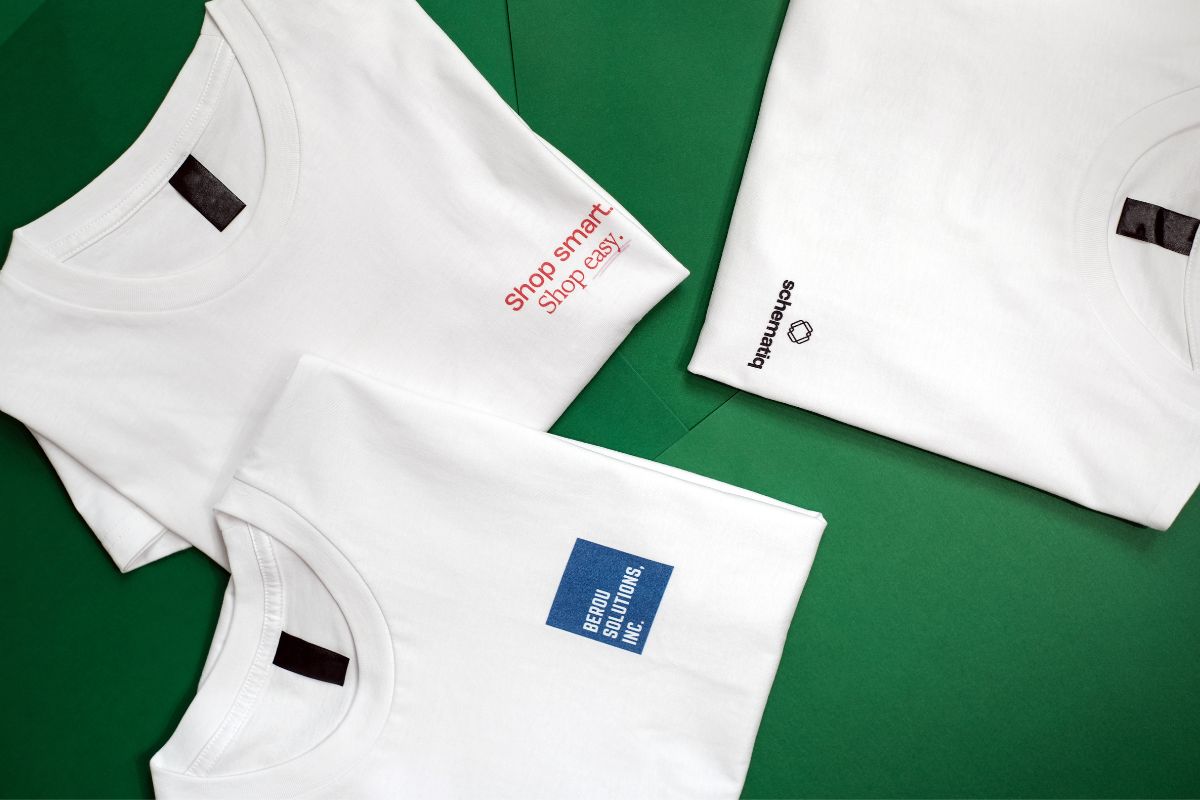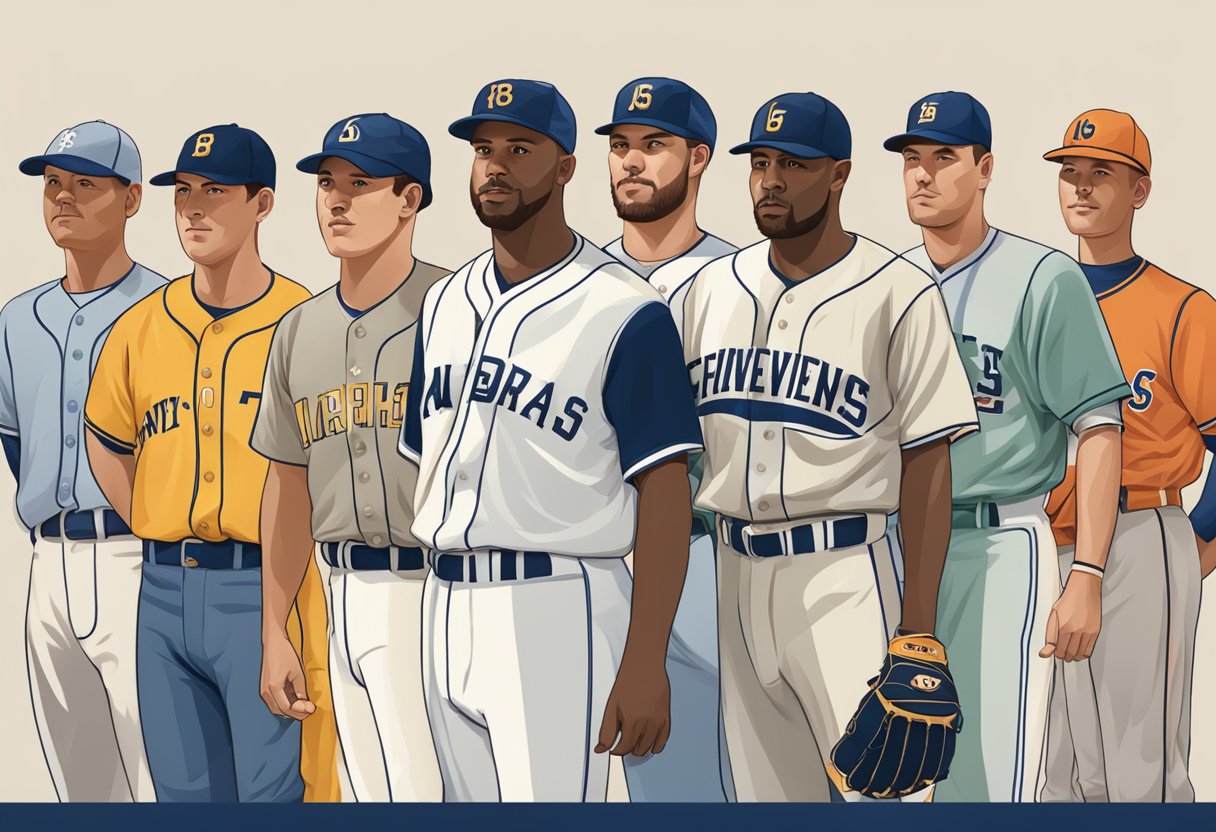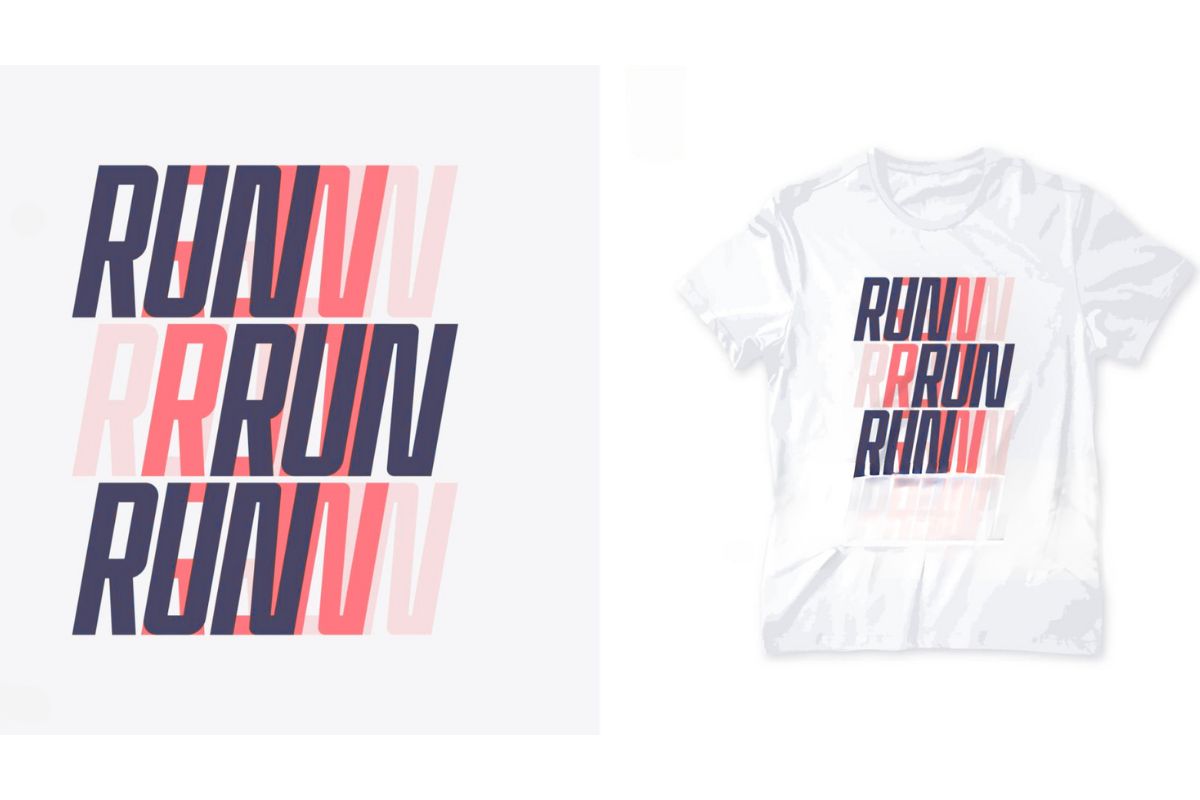When you aim to make a statement or support a cause, sponsorship t-shirts offer a powerful medium for expression. These shirts serve not only as promotional tools that increase visibility for the sponsors but also as a canvas for showcasing creativity. The art of designing a sponsorship t-shirt lies in finding the perfect balance between the sponsor’s brand and the aesthetic appeal that resonates with your target audience.
As you embark on creating a sponsorship shirt, it’s essential to consider the message you want to convey. A well-designed t-shirt can create a lasting impression and foster a connection between the cause and the community. By engaging your audience with unique and appealing designs, you can ensure that your sponsorship shirts stand out, offering both visibility for the sponsor and a compelling piece of merchandise for the wearer.
The key to a successful sponsorship t-shirt design is to integrate the sponsor’s identity seamlessly while maintaining the shirt’s appeal. This could mean elegant logo placements, selecting complementing color palettes, or incorporating design elements that reflect the ethos of the sponsored event or cause. Remember, the goal is to create a garment that supporters are proud to wear and one that sponsors are pleased to have their names associated with, building a mutual relationship that goes beyond a simple logo display.
Understanding Sponsorship Shirts
In this section, you’ll gain insight into what sponsorship shirts are, why design and quality matter, how to align with the right cause, and the significance of knowing your audience.
Defining Sponsorship Shirts
Sponsorship shirts are t-shirts that display logos or messages from sponsors who support your cause or event. These can be an excellent medium for increasing brand visibility and creating a tangible connection between the sponsor, the cause, and the audience.
The Importance of Design and Quality
When choosing a t-shirt design, it’s critical to ensure it’s appealing and reflects the sponsor’s brand accurately. A high-quality shirt not only resonates more with your audience but also stands as a testament to the sponsor’s reputation. Poor quality can detract from the perceived value of both your cause and the sponsor.
Selecting the Right Cause
Your sponsor wants to be associated with a cause that aligns with their values and business goals. Ensure the cause you’re representing is one that can elicit support and awareness, fostering a positive impact on both the community and the sponsor’s image.
Identifying Your Audience
Understanding your audience is key in sponsorship shirt campaigns. Your t-shirt design should cater to the tastes and preferences of those who will wear them, ensuring that the message reaches the right people and that the partnership yields mutual benefits in terms of engagement and recognition.
Planning Your Fundraiser

Successfully planning your fundraiser involves establishing a comprehensive campaign, leveraging online platforms for reach and contributions, and carefully scheduling each phase of the event.
Setting Up a Fundraising Campaign
When you initiate your fundraising campaign, start by identifying clear goals and the specific cause you intend to support. Your campaign should communicate the purpose compellingly to potential supporters. Here’s a basic framework to consider:
- Define your mission: Be specific about the cause and how funds will help.
- Target audience: Know who you’re reaching out to for support.
- Fundraising goal: Set a realistic financial target to gauge your campaign’s success.
Utilizing an Online Fundraising Platform
Employing an online fundraising platform can simplify the collection of donations and promotion of your event. Select a platform that is user-friendly and ensures secure transactions. Here are factors to guide your choice:
- Reputation: Choose platforms known for reliability and good customer service.
- Features: Look for tools like social media sharing to maximize exposure.
- Fees: Understand all associated costs to avoid unexpected expenses.
Creating a Timeline for Your Event
Your fundraising event timeline is crucial for coordinating activities and ensuring your campaign stays on track. Outline all the critical dates and tasks:
- Launch date: Decide when to officially start your campaign.
- Milestone markers: Set dates for progress evaluation.
- Event date: If there’s a physical event, confirm and publicize the date.
- Closing date: Specify the end of the campaign to create urgency.
By methodically following these focused steps, your fundraiser will be well-structured and better positioned to achieve its goals.
Designing Your Sponsorship Shirts

When creating custom apparel for sponsorship, your design choices—including colors, fonts, and graphics—play a pivotal role in how your supporters connect with your brand or cause.
Choosing Colors and Fonts
- Colors: Select colors that represent your brand or the theme of the event to ensure instant recognition. A palette of two to three primary colors is recommended for visual cohesion. For high visibility, consider a contrasting color scheme that makes your sponsors’ logos stand out.
- Fonts: Choose fonts that are both legible and aligned with the event’s ambiance. Bold sans-serif fonts can convey modernity, while serifs may suggest tradition. Prioritize readability, especially from a distance, to maximize the impact.
Incorporating Professional Graphics
Leverage vector graphics to maintain quality across all sizes, ensuring that sponsor logos and any other design elements remain crisp on your apparel. Secure high-resolution logos from your sponsors to avoid pixelation. If depicting a theme or concept, select or create imagery that speaks directly to the message you want to deliver.
Employing Customizable Templates
Utilize templates to ensure a consistent and professional look across various pieces of apparel. Seasoned designers from bespoke platforms often provide an array of templates that can serve as a starting point, saving you time. These templates allow for adjustments to colors, fonts, and layouts to fit your specific needs.
Tailoring Designs for Your Supporters
Remember, your supporters are the ones wearing the shirts, so tailor designs that resonate with them. Consider the fit and style of the apparel, and opt for a design that will appeal to their taste and comfort. This consideration will not only please your audience but also encourage them to wear the shirts more often, further promoting your sponsors.
Promoting Your T-Shirts

In a crowded marketplace, standing out with your t-shirt brand requires strategic promotion. Focus on building a strong presence both online and within your local community, leveraging the enthusiasm of supporters, and tapping into schools and colleges for wider reach.
Marketing Through Social Media
Social Media Platforms: Begin by selecting the platforms where your target audience is most active. Platforms like Instagram, Facebook, and Twitter are excellent for showcasing your designs and sharing stories about your t-shirts.
- Visual Content: Post high-quality images and videos of your t-shirts to attract attention.
- Engagement: Interact with your followers through comments, direct messages, and live sessions.
- User-Generated Content: Encourage satisfied customers to post with your t-shirts and tag your brand.
Leveraging Community Engagement
Local Events: Participate in community events to promote your t-shirts. Whether it’s a local fair or a community gathering, these events are a great way to get your products in front of potential customers.
- Collaborations: Work with local businesses or influencers who can help promote your brand.
- Sponsorships: Offer to sponsor local events or teams by providing t-shirts, increasing visibility among community members.
Engaging with Schools and Colleges
School Partnerships: Collaborate with schools and colleges for a t-shirt fundraiser. This not only supports a good cause but also exposes your brand to a new audience.
- Custom Designs: Offer to create custom t-shirts for school events, clubs, or sports teams.
- Fundraising Stores: Set up online stores where a portion of the sales goes back to the school or college.
Maximizing Sales and Support
To enhance your sponsorship shirts campaign and optimize the balance between sales and support for your cause, you’ll need to hone in on strategic merchandise offerings, embrace nonprofit commerce techniques, and manage orders and inventory effectively.
Offering Varied Merchandise
Variety is key to maximizing shirt sales. Provide a range of designs that resonate with your supporters while maintaining a clear connection to your cause. Consider the following:
- Limited Editions: Offer exclusive designs to create a sense of urgency.
- Size and Fit Variations: Cater to a wider audience by providing multiple sizing options, including children’s sizes and plus sizes.
- Quality Options: From basic to premium materials, allow supporters to choose based on their budget.
Adopting a Nonprofit Commerce Strategy
Align your sales with the ethos of nonprofit commerce to build trust and increase profits. Here’s how:
- Transparency: Clearly communicate how the proceeds from each sale support your cause.
- Impact Statements: Showcase the specific impact that each purchase provides, such as how $20 can feed a family for a day.
By integrating this strategy, you solidify supporter trust, which can lead to sustained sales and ongoing support.
Managing Orders and Inventory
Efficient order and inventory management are crucial for a smooth operation, helping to boost sales and avoid overhead:
- Real-Time Tracking: Implement systems that allow you to monitor inventory levels in real-time.
- Demand Forecasting: Use past data to predict future demand, preventing stockouts or excess.
Through meticulous management, you ensure that your merchandise supports your cause without wastage or unfulfilled orders.
Measuring Impact

When you design custom t-shirts for a fundraising campaign, it’s crucial to gauge how these shirts are contributing to your efforts. By effectively measuring impact, you can understand if your branded apparel is resonating with donors and supporters.
Analyzing Fundraising Campaign Success
Firstly, assess your campaign’s overall success by considering key financial metrics:
- Total funds raised: Compare against your initial goals.
- Cost vs. Revenue: Analyze production costs against generated revenue specifically from custom t-shirts.
Visual breakdown:
| Campaign Metric | Goal | Actual | Difference |
| Total Funds Raised | $10,000 | $15,000 | +$5,000 |
| Cost of Custom T-shirts | $2,000 | $2,500 | -$500 |
| Revenue from T-shirts | $5,000 | $8,000 | +$3,000 |
Examining Case Studies
Delve into case studies that showcase successful campaigns similar to yours. Pay attention to how custom t-shirts were utilized:
- Look for patterns and strategies in campaigns that exceeded their targets.
- Consider how the design and messaging on shirts aligned with campaign goals.
Key Aspects to Review:
- Engagement levels due to shirt design.
- Reach of the campaign through shirt-wearing supporters.
Gathering Feedback from Donors and Participants
Finally, gather direct input from donors and participants. Their feedback will provide qualitative data:
- Surveys: Ask specific questions about their perception of the custom t-shirts.
- Interviews: Conduct short interviews to get detailed insights.
Questions for Consideration:
- How did the t-shirt impact your decision to support the campaign?
- Will you wear the t-shirt post-campaign, serving as continued support?
By implementing these measurement strategies, you ensure a thorough understanding of your campaign’s impact and the role of sponsorship shirts within it.
Cultivating Relationships

In the realm of branding and sponsorship, effectively cultivating relationships hinges on appreciation, loyalty, and community. Your approach should be strategic, fostering connections that resonate with volunteers, supporters, and customers alike.
Appreciating Volunteers and Employees
Recognize the efforts of your volunteers and employees by offering custom t-shirts that serve as tokens of appreciation. These shirts can bear your brand and a message of gratitude, turning every recipient into a proud ambassador of your mission. For example:
- Employee of the Month: Reward outstanding employees with a special edition shirt that highlights their contribution.
- Volunteer Milestones: Celebrate volunteers’ hours of service with commemorative shirts marking different levels of dedication.
Nurturing Long-Term Supporter Loyalty
Your long-term supporters are the backbone of your initiatives. Deepen their sense of belonging by designing exclusive t-shirt lines that they can’t find anywhere else. This can include:
- Limited Edition Shirts: Release special designs annually for consistent supporters to collect as a symbol of their enduring loyalty.
- Membership Exclusives: Offer t-shirts as part of a membership package, strengthening their connection to your brand.
Building a Community Around Your Brand
T-shirts foster a visual sense of community that can bring your supporters together. Create designs that encapsulate the spirit of your community, encouraging family and friends to wear them as a sign of unity. Consider organizing:
- Group Events: Where wearing the sponsored t-shirts builds a visual sense of family and community.
- Social Media Challenges: Encourage sharing of your branded t-shirts online to spread awareness and love for your cause.
Frequently Asked Questions
Sponsorship shirts offer a unique way to showcase your supporters while maintaining the theme of your event or cause. Here are specific answers to common questions that will ensure you make the most of this opportunity.
What are some creative ways to arrange sponsor logos on a t-shirt for maximum impact?
For maximum impact, consider arranging smaller sponsor logos around a larger central logo or along the sleeves. Utilize the shirt’s colors and patterns to create a cohesive design that draws the eye towards the logos.
Can you suggest effective design strategies for incorporating multiple sponsors on a school event shirt?
You could group sponsors by tier levels, with primary sponsors receiving larger logo placements at the center or upper back of the shirt, and secondary sponsors showcased in a smaller size along the bottom or on the sleeves for proportional balance.
What are the best practices for negotiating sponsorship placement on a shirt?
Clearly communicate the visibility and size options to potential sponsors, providing mock-ups for clarity. Emphasize the audience reach and potential marketing benefits while ensuring their brand is represented in alignment with their values.
How can a fundraising event effectively use sponsor-branded t-shirts to encourage donations?
Offer sponsor-branded t-shirts as a reward for donations at certain levels, or create a limited edition design that incorporates sponsor logos in a creative way that adds exclusivity and value, enticing event participants to donate.
What guidelines should be followed when designing a t-shirt that includes both sponsor logos and a funny theme?
Your t-shirt should balance humor with respect for the sponsor’s brand. Ensure the comedic elements do not overshadow or conflict with the logos, and maintain legibility and professional standards so sponsors are appropriately represented.
In a sponsorship shirt, where should the most prominent sponsor’s logo be positioned?
The most prominent sponsor’s logo should be placed in a high-visibility area, such as the center of the chest, the upper back below the neckline, or on the front of the shirt, as these positions typically attract the most attention.



